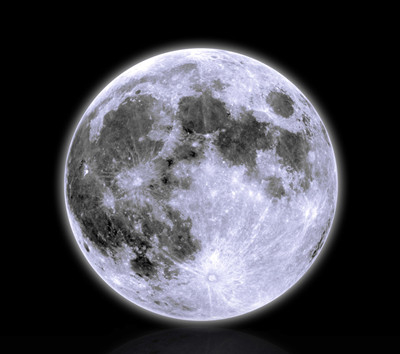The dark side of the moon.
月亮的背面。
It's remote and mysterious.
既遥远又神秘。
And not just because we can't see it from Earth.
不仅是因为我们在地球上看不到。
When viewed from space, the moon's back side looks totally different from its front.
当你从宇宙观察的时候,它的背面与我们通常看到的正面也是完全不同的。
Now, researchers think they have a solution to the mystery, which they share in the Astrophysical Journal Letters.
现在,研究人员们认为他们有办法了解月球背面的神秘并把这种方法分享到了《天文物理期刊通讯》杂志上。
You may have wondered about the Man in the Moon, that face-like image made by the large flat plains on the lunar surface that faces us.
也许你对月中人,就是月球表面由巨大平原形成从远距离看上去好似人脸的图形充满无限遐想。
But scientists wonder why the far side doesn't have comparable features.
但科学家们好奇为什么月球另一面并没有类似的特征地貌。

According to the new analysis, this asymmetry has to do with how the moon was made.
根据最新分析,这种不对称是与月球的形成原因有关。
Not long after the Earth formed, a Mars-sized hunk of intergalactic debris smacked into our baby planet, flinging off material that then became the moon.
地球形成后不久,一块火星大小的星际碎片刚巧与我们这颗正在孕育中的星球相撞,它本身的物质被引力吸走之后就变成了现在我们所见到的月球。
The crash left both bodies boiling hot.
这次亲密接触为双方都打下了烙印。
But the smaller moon cooled down more quickly than the molten Earth… especially the part that faced the other way.
但更小的月球比热情的地球冷却的更快一些,特别是背对着的那一面。
The minerals on the moon's cooler side started to precipitate sooner.
月球上已经冷却的那面上的矿物质迅速凝结冷却沉降。
That head start gave the far side a thicker crust, which is more resistant to the weathering seen on the familiar side:
这使得背面形成了一层非常厚的外壳层,从而更有效抵抗正面同样会发生的风化侵蚀等现象:
weathering that gives a face character. Even on the moon.
风化侵蚀造成了表面层上的那些特征地貌。即使在月球上也是如此。


